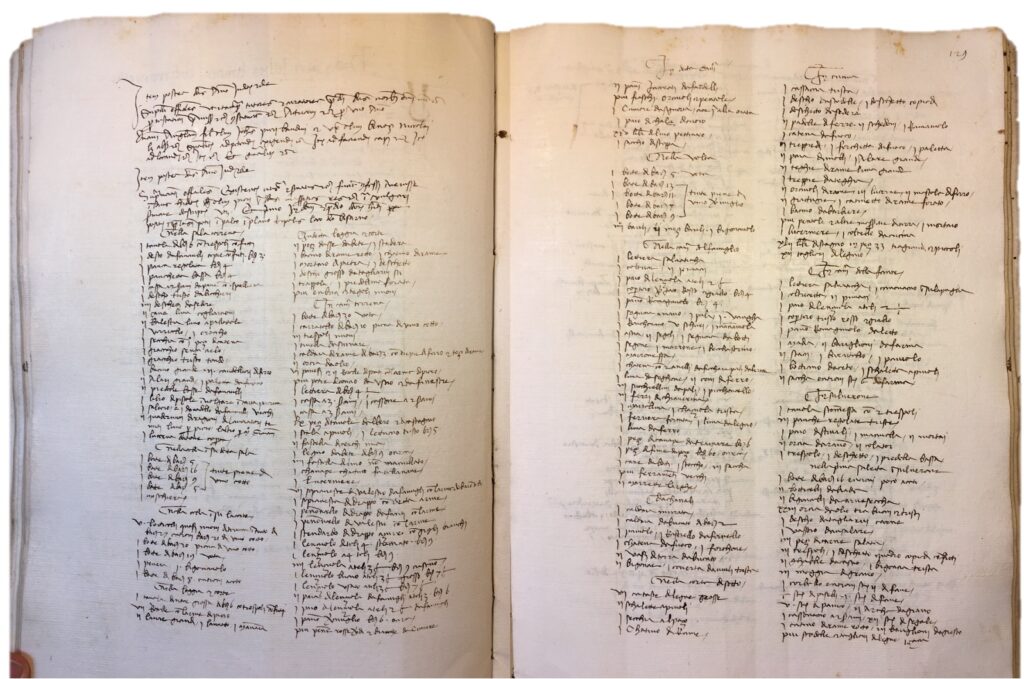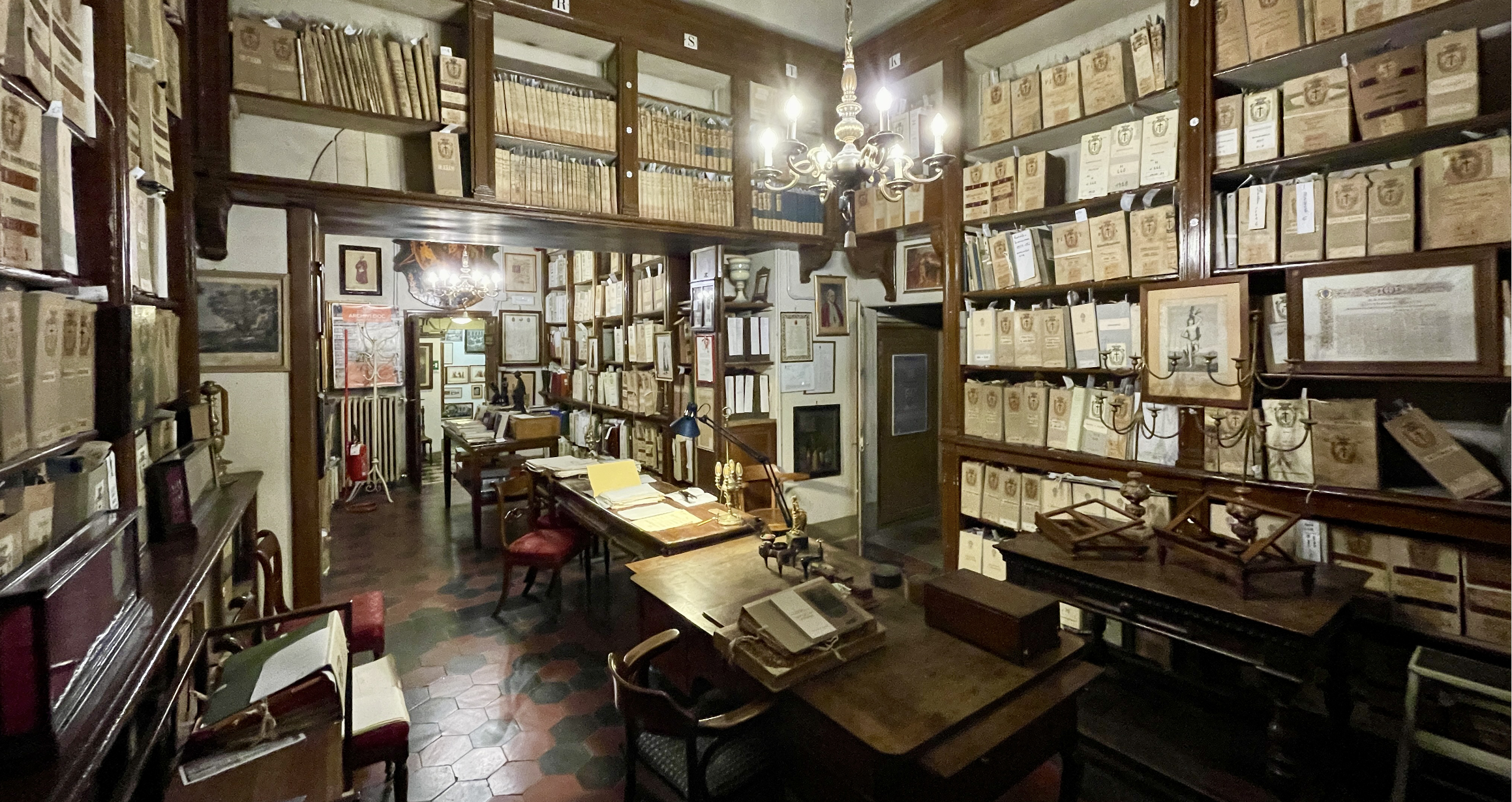
inventories
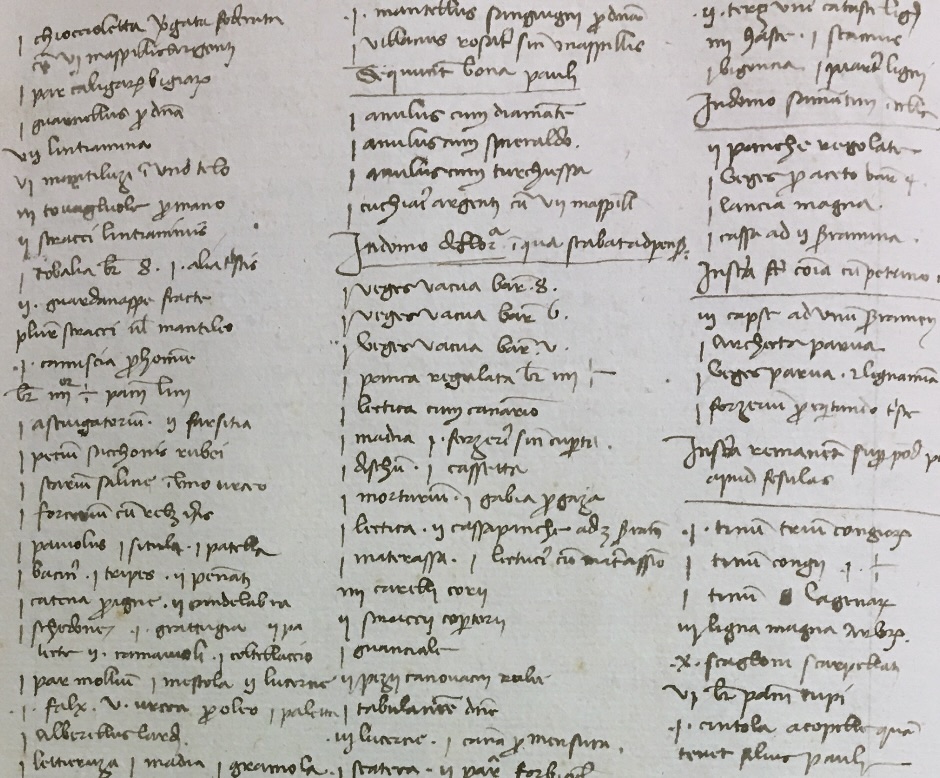
Why inventories?
“Inventories, in any case, are worth publishing (and reading) for their own sake. They more than any other kind of document make us think about terminology, function and context, and about the distortions in our picture of the material products of a past culture if we judge them solely by what happens to survive.”
John Sherman, “The Collections of the Younger Branch of the Medici,” The Burlington Magazine, 117, No. 862 (1975): 14-27, 14
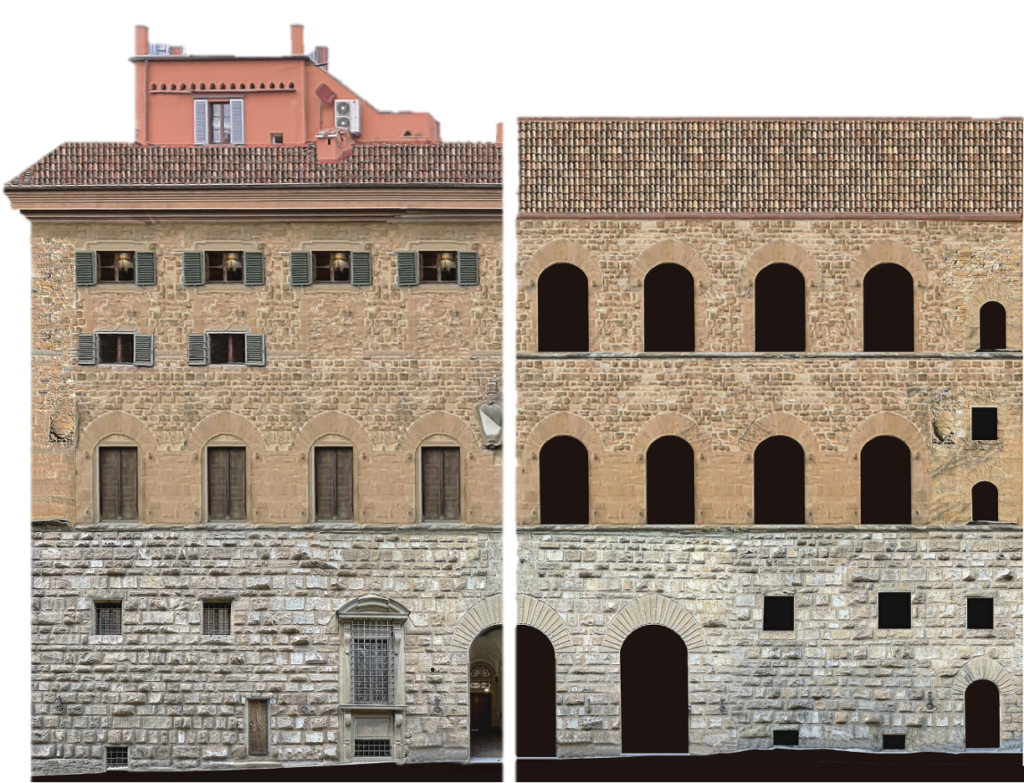
Architecture/1: Palace facades
Pupilli inventories have been crucial in reconstructing the hypothetical original appearance of late medieval and early Renaissance Florentine palaces. Based on 3D laser scan surveys carried out by Prof. Bent for the Florence As It Was project, and cross-referenced with archival material from family collections and reports prepared by public restoration offices, palace facades have been digitally restored to their appearance at the time of their construction. In the picture on the left, the facade of Palazzo Uzzano-Capponi in the current state (left side) and at the time of the 1424 inventory (right side).
Architecture/2: Interior organization
Pupilli detailed inventories allow the reconstruction of architectural spaces and their functional network, identifying areas generated by male/female, private/public, and residential/commercial dichotomies, and facilitated by the multiplication of spaces and their increased specialization in residences at the end of the Trecento. On one hand, the courtyard became a more stylistically controlled and highly regulated space, replacing the traditional family loggia, and indicating a withdrawal from civic engagement in favor of the interests of the immediate family. On the other, these new palaces reorganized private areas, multiplying spaces around the camera, which provided buffer zones protecting the family’s privacy (anticamera, cameretta, salotto), and created space for the first specialized amenities (guardaroba, necessario, stufa, scrittoio). This set of additional rooms were often built for each adult in the family, revolutionizing the traditional interactions among family members.
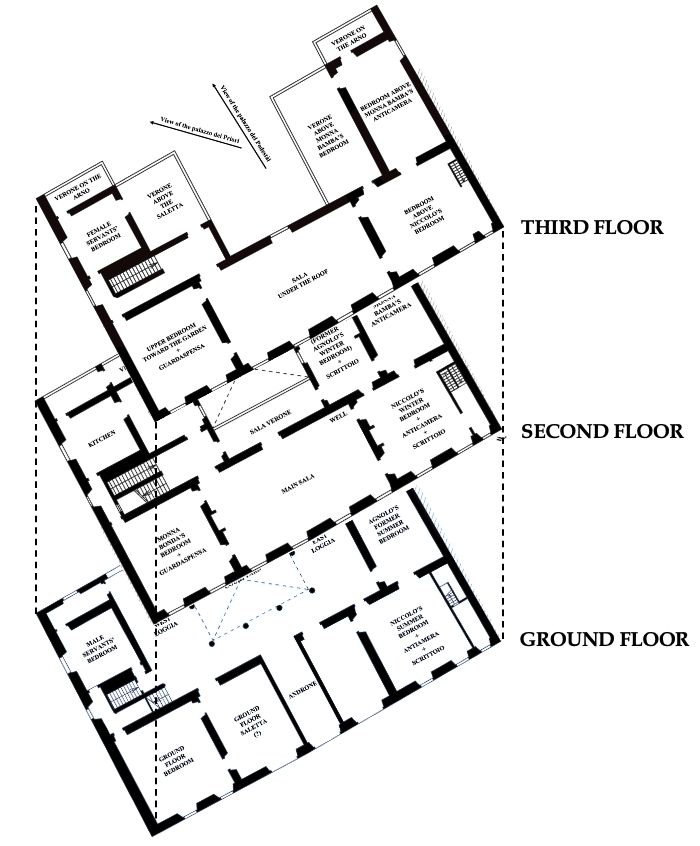
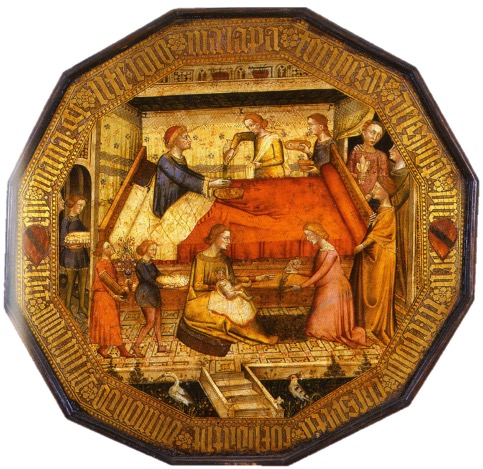
Everyday objects
Historical inventories such as the ones in the Pupilli collection provide invaluable insights into the lifestyles of early modern Florentines by detailing the possessions and daily objects that populated their homes. These records catalog a wide array of items, from mundane household goods to luxurious artifacts, allowing historians to reconstruct the living conditions, social structures, and cultural values of the time. Moreover, such inventories often include information about the owners’ social status and economic activities, providing a comprehensive picture of their daily routines and interactions.
Collecting & Learning
Among the large number of manuscripts and writing tools listed in the inventories, the documents reveal the emergence of the personal study room, which was central to understanding the shift in lifestyle from late medieval practices. For the first time, the residences of this period included, from their construction, a specific room labeled in inventories as scrittoio: a dedicated study room, separate from where business was conducted. This space was the prototype for the later humanistic study room called the studiolo, appearing much earlier than the examples in Ferrara and Urbino.
A contract with Olschki has been signed for the publication of a book that will include the list of all books listed in the Pupilli inventories.
